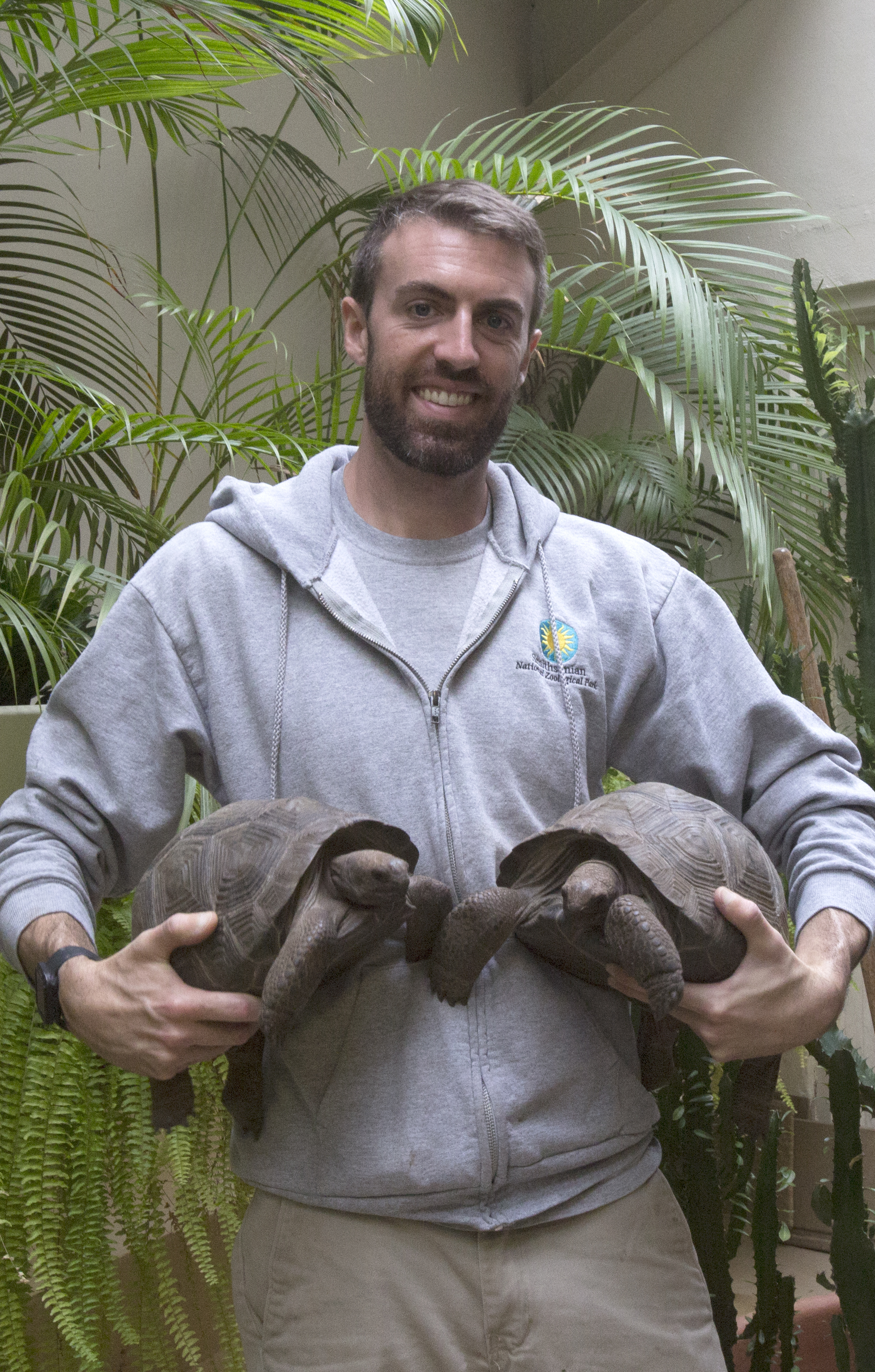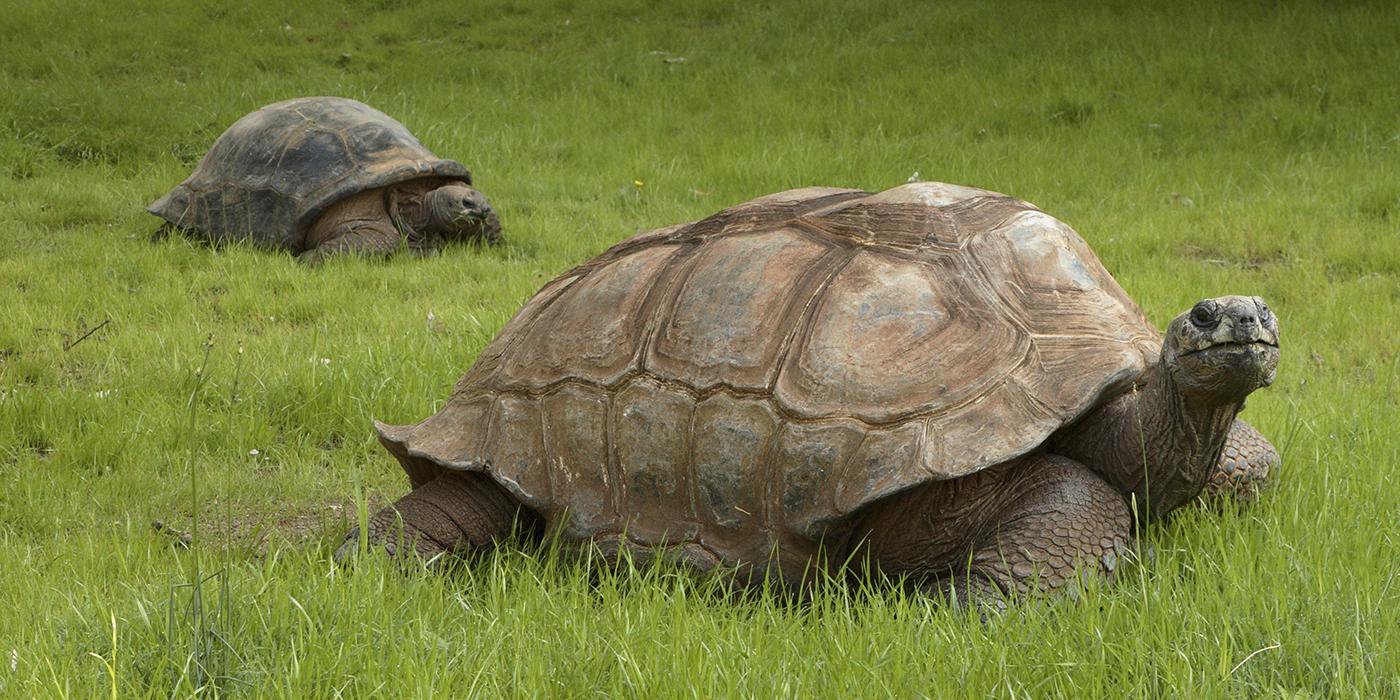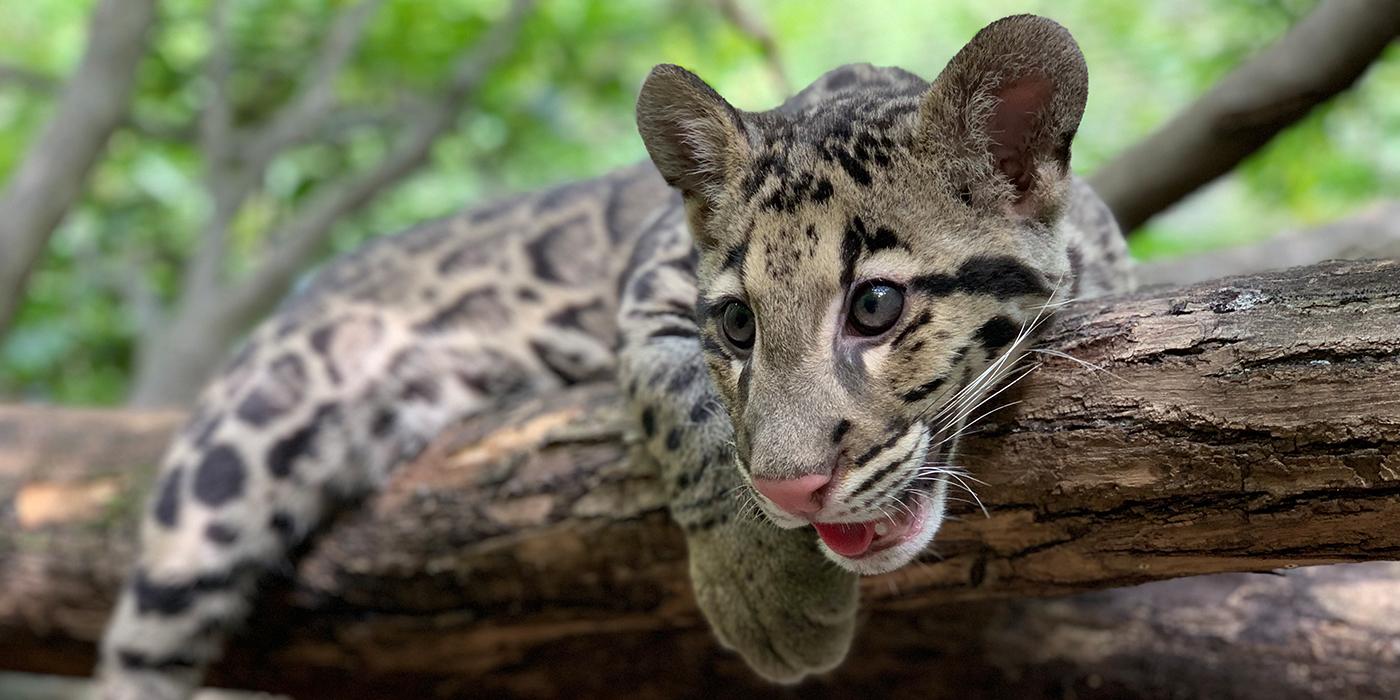Two Young Aldabra Tortoises Move to the Smithsonian’s National Zoo
The Tortoises Can Live To Be 150 Years Old
The newest residents at the Reptile Discovery Center at the Smithsonian’s National Zoo are in no rush to grow up. The Zoo welcomed two juvenile Aldabra tortoises in late September from the Henry Doorly Zoo and Aquarium in Omaha, Nebraska. The tortoises only weigh about 11 pounds and are 5 years old, but they could live to be over 150 years old and weigh hundreds of pounds. It will take the tortoises decades to mature to their full adult size.
Keepers estimate that the tortoises will be sexually mature when they are between 25 and 30 years old. It is difficult to determine if the tortoises are male or female before they are mature. Male giant tortoises grow a bit faster than females do, but they both look identical as juveniles.
“It’s really exciting to have young Aldabra tortoises here,” said Matt Evans, assistant curator of herpetology. “We are very lucky that we will be able to watch them grow up. Young children who visit these tortoises in 2019 will be able to take their grandchildren to see the same tortoises 70 years or more from now.”
The tortoises are easily distinguishable from the Zoo’s adult Aldabra tortoises Chyna and Rulon. Chyna weighs between 150 and 175 pounds. Rulon weighs about 550 pounds. Rulon and Chyna have lived at the Zoo since 1976 and are estimated to be between 80 and 100 years old.
The juvenile tortoises stick close together, which is normal for younger animals and may provide them with more security from potential threats in the wild. Adult Aldabra tortoises can be solitary or live in small groups. The young tortoises have been introduced to Chyna, but they will not meet Rulon until they have grown a little larger. Keepers say that Chyna has not shown much interest in them, but the two juveniles are very interested in her and will follow her around their exhibit. They gradually have been “coming out of their shells” and have been exploring their new home more confidently.
When the tortoises are more comfortable, keepers will begin training them to participate in their own daily care. They will teach them to touch their noses to, and move toward, a red target. As adults, the tortoises are too heavy to be moved, so keepers need the tortoises to shift themselves to different areas of their exhibit and show keepers different parts of their bodies. The targets tell the tortoises where the keepers need them to move or position themselves. In exchange for moving toward and touching the target, the tortoises receive treats.
The tortoises are most active in the mornings. The best time to see them is during their morning feedings of leafy green salads and hay.
Native to Aldabra Island in the Indian Ocean, Aldabra tortoises are considered “vulnerable” by the International Union for Conservation of Nature. Aldabras are one of the world’s largest land tortoises, and they inhabit scrub lands, mangrove swamps and coastal dunes. Males are considerably larger than females and can weigh up to 550 pounds. The male’s upper shell, called a carapace, can measure 4 feet in length. Aldabra tortoises are important to the ecology of the Aldabra atoll, eating nutritious fruits and leaves from small trees and shrubs and passing seeds through their digestive tracts; these seeds eventually become food for many other species.
Related Species:
Image Gallery






